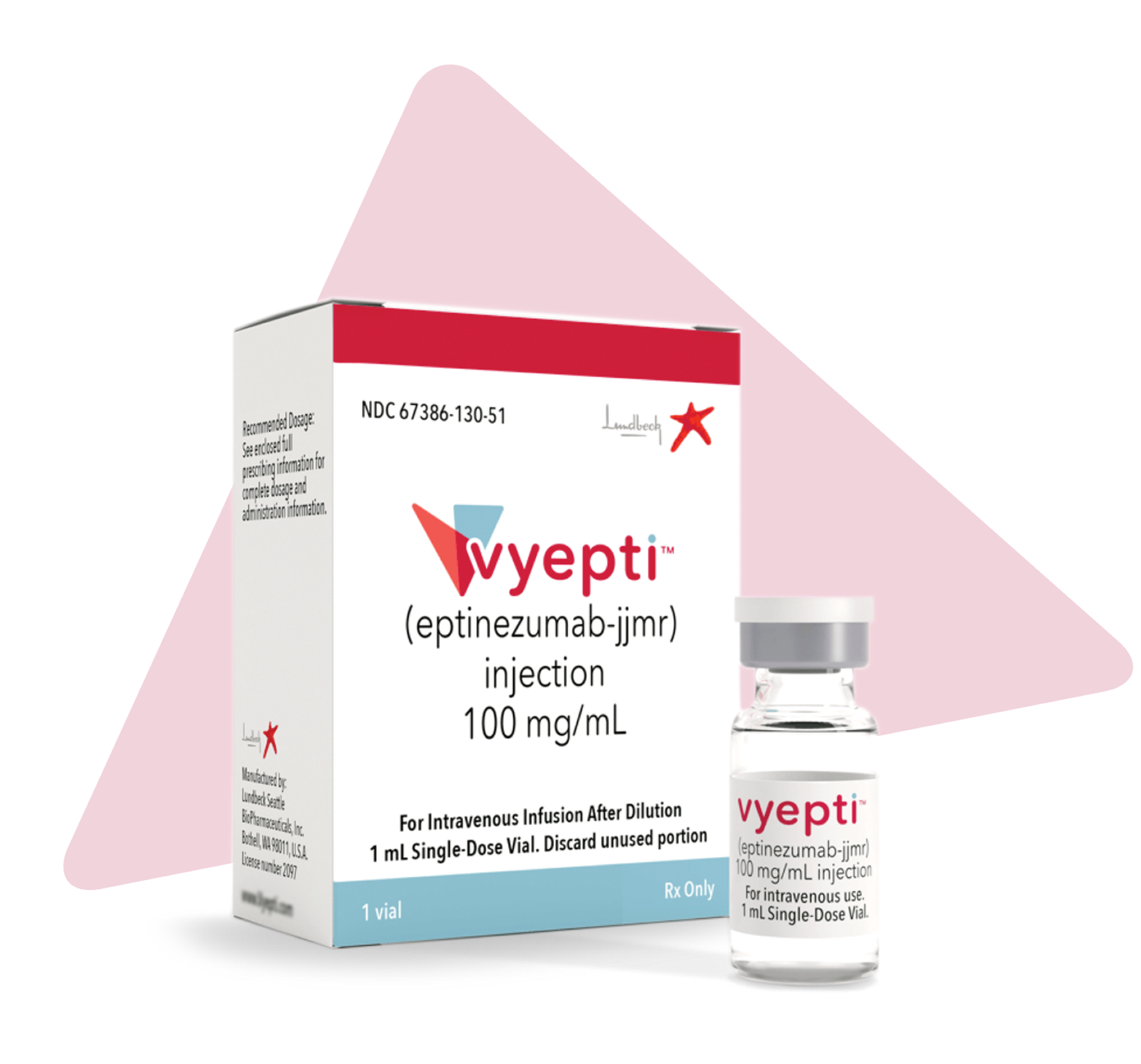
Meet Sophie
Feeling trapped by migraine and showing signs of medication overuse headache

THIS SITE IS FOR UK HEALTHCARE PROFESSIONALS ONLY. IF YOU ARE A MEMBER OF THE PUBLIC/PATIENT PLEASE CLICK HERE.


A treatment that can provide effective migraine prevention, which may help break the vicious cycle of needing to take more acute medication

VYEPTI (eptinezumab) is indicated for the prophylaxis of migraine in adults who have at least 4 migraine days per month.1


(PROMISE-2 primary endpoint)

(DELIVER primary endpoint)


(PROMISE-2 post hoc analysis)

These decreases in acute medication usage resulted in patients no longer meeting the monthly medication threshold for MOH, based on ICHD-3ß criteria10




This is not a current GB/EU pack and is for illustration purposes only.
For further information about VYEPTI, including further detail on efficacy and tolerability data, please see the About VYEPTI section
A treatment that can help prevent migraines with a fast onset of action, to help her get back her academic and social life
(PROMISE-1 primary endpoint)

(DELIVER primary endpoint)


(PROMISE-1 post hoc analysis)


VYEPTI 100 mg: 52.3%
Placebo: 24.5%Values for weeks 1 through 4 calculated as the average daily percentage of patients with a migraine during that week. Normalisation to average monthly days was achieved by multiplying the daily percent by 28 days (baseline period).13




This is not a current GB/EU pack and is for illustration purposes only.
For further information about VYEPTI, including further detail on efficacy and tolerability data, please see the About VYEPTI section
Reporting forms and information can be found at www.mhra.gov.uk/yellowcard or search for MHRA Yellow Card in the Google Play or Apple App Store. Adverse events should also be reported to Lundbeck Limited, Medical Information, on: 01908 638972 or Email: SafetyLuUnitedKingdom@lundbeck.com
BL, baseline; CM, chronic migraine; CV, cardiovascular; EM, episodic migraine; ICHD-3ß, International Classification of Headache Disorders, 3rd edition (beta publication); MMD, monthly migraine day; MOH, medication overuse headache; NSAID, non-steroidal anti-inflammatory drug; OTC, over the counter; TEAE, treatment-emergent adverse event.